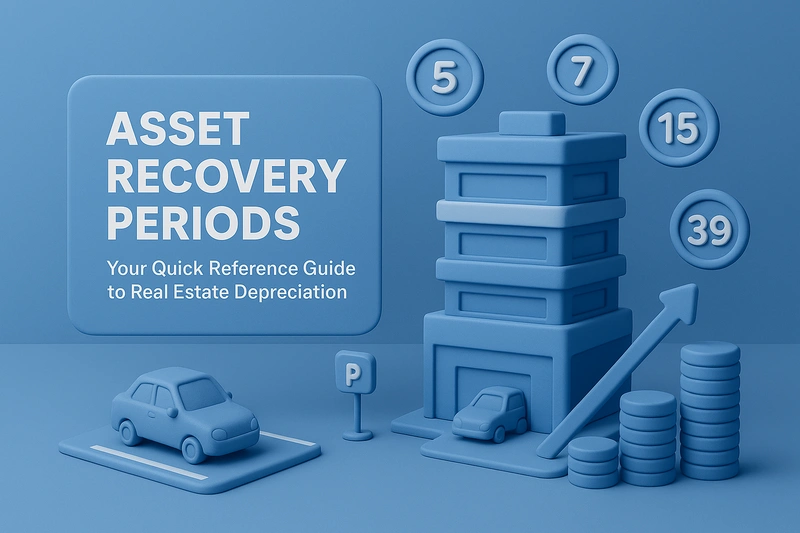When I first reviewed a freestanding retail building leased to a specialty outdoor gear store, the owner was expecting maybe a modest bump in early tax deductions. After the cost segregation study, they were stunned.
Nearly 30% of the building’s cost basis was reclassified into 5- and 15-year property. That meant hundreds of thousands of dollars in accelerated depreciation and a surge in first-year cash flow that went straight into expansion plans.
Single-tenant retail properties often deliver results like this because of their straightforward layouts, uniform systems, and clearly delineated site features. Unlike multi-tenant centers with diverse fit-outs, a single-tenant building’s qualifying assets are easier to identify and segregate. That simplicity can translate into a faster, more accurate study and, often, a higher percentage of short-life asset reclassification.
How Cost Segregation Works in Single-Tenant Retail
Cost segregation breaks a commercial property into components with different depreciation timelines. Instead of depreciating the entire structure over 39 years, qualifying portions (such as decorative lighting, specialty electrical, signage, or dedicated HVAC) can be written off over 5, 7, or 15 years.
For single-tenant retail, common reclassifications include:
- Interior finishes: millwork, display fixtures, wall treatments
- Specialized systems: point-of-sale wiring, accent lighting, refrigeration units for food retailers
- Site improvements: parking lot lighting, landscaping, walkways
An engineering-based study is the gold standard. It involves reviewing architectural drawings, cost records, and conducting a site inspection. Each component is mapped to IRS property classes, distinguishing between § 1245 (personal property) and § 1250 (real property). This method is defensible in an audit and ensures full compliance.
Timing Considerations and Eligibility
The optimal moment to conduct a cost segregation study is at:
- Acquisition (maximize first-year deductions)
- New construction (integrate cost tracking from day one)
- Major renovation (capture both new and replaced components)
If you’ve owned a property for several years, a look-back (catch-up) study can retroactively claim missed depreciation in the current year without amending prior returns.
Single-tenant retail is particularly eligible because the building’s systems, finishes, and site features often have clearly separate costs. And you don’t need a big-box store for this to pay off; even modestly priced buildings can yield a strong return on the study cost.
Benefits with Real Estate Context
Accelerated depreciation means significant tax deductions in the early years, translating into improved cash flow. Those funds can be reinvested into capital improvements, debt reduction, or acquisitions.
Example outcomes from real-world studies:
- A $7.4 million retail property reclassified ~25% of costs, producing over $1 million in net present value over 10 years.
- A $2.5 million property saw 20–35% of assets moved into shorter lives, creating immediate six-figure savings.
- A strip-mall case study yielded 31% in 5-year property and 12% in 15-year site improvements.
Under the new 2025 rules, most qualifying property acquired after January 19, 2025 now qualifies for 100% bonus depreciation, meaning a big chunk of those deductions can hit in year one. For earlier acquisitions, the older rules still apply: 60% in 2024, 40% in 2025, 20% in 2026, so timing plays a big role.
Either way, pairing cost segregation with bonus depreciation creates a powerful upfront boost to ROI.
Caveats and Considerations
While the benefits of cost segregation can be substantial, it’s a strategy that rewards careful execution. Not every property (or every owner’s circumstances) will produce the same return, and the stakes are high enough that a misstep can have lasting tax implications.
- IRS scrutiny: The IRS doesn’t prohibit cost segregation, but it expects rigor. Poorly documented or overly aggressive studies are far more likely to be challenged. That’s why seasoned practitioners lean on engineering-based analysis and retain clear cost records to support every reclassification.
- Depreciation recapture: Accelerating depreciation means more of your deductions are taken upfront. If you later sell the property, some of those deductions can be “recaptured” and taxed at higher rates. This isn’t a reason to avoid cost segregation, but it’s a reason to plan your hold period, financing, and disposition strategy with your CPA from the start.
- Holding period: Owners who plan to hold for five years or longer tend to see the clearest benefits. If you’re looking to flip the property in two years, the up-front tax benefit might be reduced or offset by recapture when you sell.
- Study cost vs. property value: A high-quality study can cost several thousand dollars, and for larger properties, considerably more. The return is often a multiple of that cost, but the only way to know is to run a benefit estimate first. This is especially important for smaller single-tenant properties, where savings are still possible but margins are tighter.
Key Action Steps for Property Owners
If you own a single-tenant retail property and want to explore cost segregation, the path to unlocking those savings is straightforward, but it benefits most from a structured, deliberate approach.
- Request a preliminary estimate: A good provider will run a no-obligation projection based on your purchase price, construction cost, and property type. This “go/no-go” step prevents you from spending money on a full study that won’t deliver enough benefit.
- Select an experienced provider: The best results come from teams that combine engineering expertise with deep tax knowledge. Look for firms that can reference IRS audit successes, not just theoretical savings. In retail, the devil is in the details — like whether a lighting system is decorative or functional, or whether an HVAC unit is serving a process-specific function. The right provider knows how to document those distinctions.
- Time the study strategically: The earlier you perform the study, the earlier the savings start to work for you. Acquisition and construction phases offer the cleanest data, but renovations can also be a golden opportunity, especially if you’re replacing or upgrading significant systems.
- Coordinate with your CPA: Cost segregation doesn’t live in a vacuum. Your CPA can integrate it with other deductions, capital allowance strategies, and tax elections to maximize overall impact.
- Plan for reinvestment: Treat the tax savings not as a one-time windfall, but as fuel for the next phase of your investment plan, whether that’s paying down debt, funding improvements, or acquiring additional properties.
Turning Retail Simplicity Into Strategic Savings
Single-tenant retail properties often deliver exceptional cost segregation results because their systems and layouts are easy to document and classify. That clarity can translate into more short-life assets, faster deductions, and cash flow you can reinvest immediately.
The right provider will combine engineering precision with tax expertise to capture every eligible benefit and keep your study audit-ready. For owners seeking to maximize the advantages of cost segregation for single-tenant retail, R.E. Cost Seg offers the focused, defensible approach that turns potential savings into lasting value.






